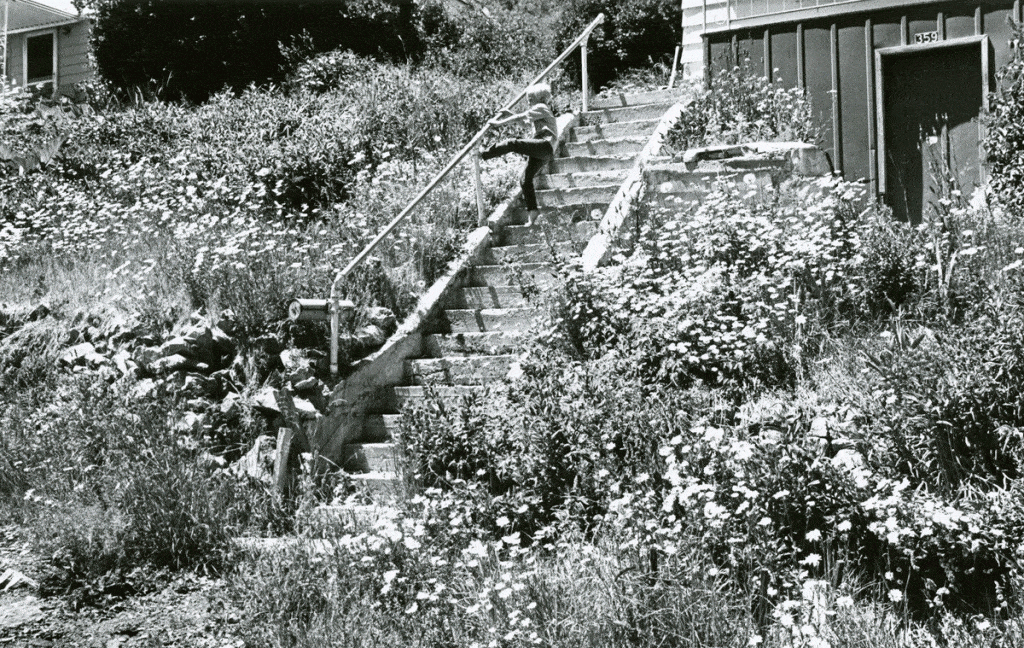Tucked between the miles of single-track trails and picturesque aspens stand the remnants of Park City’s mining industry. Tunnels, towers, and cabins pepper the hillsides, some with informational signs and photos showing what Park City used to look like during the silver-fueled heyday. But as the mines closed, structures were leveled, and Park City became known for skiing and mountain biking, the hillsides started to show a different sort of prize: an abundance of wildflowers.
Utah is home to over 1,000 species of native wildflowers, and Park City boasts hundreds of them. There are numerous quality wildflower guides, apps, and websites to learn how to identify our native flora. However, there are three species of flowers found around Ontario Drain #3, the Alliance Mine up Daly Ave, and the Silver King Coalition tram towers that epitomize the beauty and variety of Utah’s wildflowers.
A striking wildflower that is prolific on Treasure Hill and other mining areas is the Sticky Geranium. This five-petaled flower is light pink to deep fuchsia, and is found as a single flower or in a small cluster. It’s easy to distinguish the Sticky Geranium from other pink blossoms due to its darker pink color appearing in the center of the flower and as thin stripes radiating out on the petals. The ‘sticky’ name comes from the short, sticky hairs that cover the deeply lobed green leaves, stalk, and flower stalks. The Sticky Geranium can range in height from several inches to two feet.
Another brightly colored and uniquely shaped flower is the skyrocket. The skyrocket is a variety of phlox and has trumpet-shaped blossoms with five or six lobes that are clumped together. The plant tends to be small, up to a foot in height, with blossoms nearing a half-inch in length. These blossoms are most commonly bright red, but may also be light pink, white, or even striped. Skyrocket was described by Lewis and Clark when they observed the small plant in northern Idaho and was given the name ‘skunk flower’ for its unappetizing odor. You can find skyrocket along the Ontario and Speedbag trails near the Alliance and Judge Mines.

Credit: Park City Historical Society & Museum, Raye Ringholz Collection
One of the most distinct flowers found near the mining structures is the Wasatch Penstemon. This stunning and eye-catching blossom can be found along Sweeney’s Switchbacks, Rossie Hill and Rossie Hill connector, and other forested trails. The flower has a deep center, with three lobes on the bottom and two on the top. Multiple blossoms grow next to each other stacked on the stalk. The Wasatch Penstemon is a “showy” variety, meaning that the flowers are quite large, some over an inch long, and range in color from a royal blue to bright violet. There is another variety of penstemon that is much shorter, only a few inches tall, with the blossoms tightly packed around the stalk. Looking closely, this smaller variety has the same shape as the more distinguished Wasatch Penstemon.
The Park City hillsides have changed dramatically in the decades since mining was the lifeblood of the town. And while these wildflowers and others surely peaked through the industrial landscape back then, it is refreshing to see how splashes of pinks, purples, reds, blues and whites are abundant throughout town today. The juxtaposition of aging steel and fresh blooms tell a story of the way things were, and how we can combine our love of the past with our appreciation of the present.
The Park City Museum is hosting an in-person lecture on called What’s So Funny About Park City’s Wildflowers? given by author, biologist, and ecologist James Cornett on Wednesday, July 27 from 5-6 p.m. at the Museum’s Education and Collections Center at 2079 Sidewinder Drive. Register here.
Julia Edwards is the Summit Land Conservancy’s Conservation Transaction Manager. She is responsible for supporting conservation and stewardship projects, focusing on developing programs that get people outside and enjoying the beautiful landscapes of Summit County.